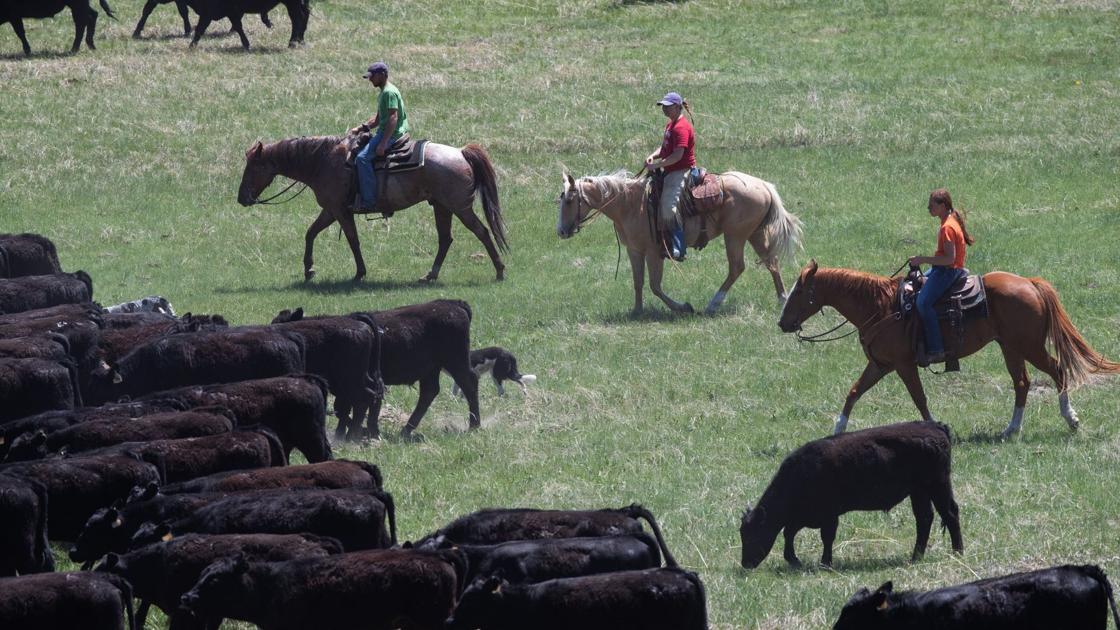
During the early, panicked days of the pandemic, some grocery stores in Nebraska ran out of beef. Think about that for a minute. Some people in the Beef State could not buy beef. This should not happen, but it did.

Kyle Arganbright Community Columnist
The thing is, Nebraska didn’t really run out of beef. I’ll bet your average ranch house had a couple hundred pounds of beef sitting in a freezer in the basement that the owners couldn’t sell legally if they wanted and plenty of cattle ready to be processed but no place to process them. Nebraska didn’t run out of beef; the beef supply chain broke. It’s been broken for a while, but only those in the cattle industry knew it. The pandemic brought this to light.
Nebraska helped build this supply chain. Maybe Nebraska can help fix it.
The Sand Hills were custom-built for cattle ranching, with clean water and rich grasses. Over the last several generations, the infrastructure has grown to match the natural resources. This has positioned the area to produce world-class cattle, and lots of them. The Sand Hills is home to four of the top cattle-producing counties in the country — heck, Cherry County counts 28 mama cows for every one person.
These cattle make their way to feedlots throughout Nebraska. Situated at the intersection of world-class cattle produced by Nebraska ranchers, high-quality feed produced by Nebraska farmers and a concentration of packing plants, Nebraska feedlots have led cattle feeders for generations.
Packing plants have seen major evolution over the years. At first, the plants were hyperlocal — they had to be, because refrigerated transport didn’t exist. With the development of industrial efficiency and mass transportation such as railroads, the beef packing plant gradually moved away from the local butcher to regional centers, including South Omaha and Chicago. Fast forward to today and 80% of the market is dominated by four packers. It’s concentrated, to say the least.
What’s nearly happened is the commoditization of beef. Consumers have grown accustomed to buying a consistent quality of beef at a reasonable price. That’s great, but commoditization often precedes market domination by a few firms. We don’t have to look far to see what that does — I touched on it with beer and broadband in previous columns — markets eventually tilt in favor of the major players as industry concentration increases.
There are big conversations going on in the cattle industry, especially regarding the fairness of cattle markets and the discontinuation of country-of-origin labeling, but these decisions are going to be made in Washington, D.C. As Nebraskans, let’s focus on policies within our control to find ways to drive beef demand while helping Nebraska producers earn a premium price for their premium product. Let’s become to beef what Wisconsin is to cheese, Idaho is to potatoes, and Napa is to wine. We already have the product; let’s develop the policies.
Let’s do all we can to support the establishment of additional packing plants and lockers in Nebraska. Concentration has led to consolidation — let’s lead the local meat revolution. It’ll help create a more resilient supply chain, more competition for Nebraska cattle and more jobs throughout the state.
Let’s develop a state meatpacker inspection program in place of federal inspection programs for smaller packers. In order to sell beef directly to consumers or to a local restaurant, beef must be processed at a USDA-inspected locker. Enabling state inspections would, in theory, make the process less onerous for smaller processors so ranchers would have more options when selling their product. This would make it easier for families in Omaha to buy beef directly from Nebraska ranches.
Let’s start a state-of-origin labeling program. Let’s let consumers easily identify and purchase Nebraska beef just as Maryland does with crab and Maine does with lobster. Should country-of-origin labeling return, Nebraska would be well-positioned to expand the brand.
We shouldn’t wait to take our medicine from the feds or fall prisoner to political incrementalism. We need to jump headfirst into work to support Nebraska’s farmers and ranchers and the state’s largest industry. It could make Nebraska ranchers more profitable, rural communities more prosperous and consumers happier. If we don’t, some other state will.
Kyle Arganbright is co-founder and executive vice president of Sandhills State Bank, mayor of Valentine, co-founder of Bolo Beer Co. and lover of all things Sand Hills.
January 24, 2021 at 07:15PM
https://ift.tt/2YbS8QG
Kyle Arganbright: Nebraska should be to beef what Napa is to wine, what Wisconsin is to cheese - Omaha World-Herald
https://ift.tt/2RxTDX4
Beef


No comments:
Post a Comment